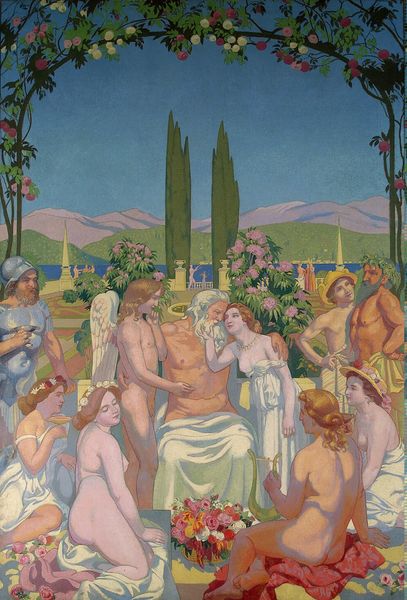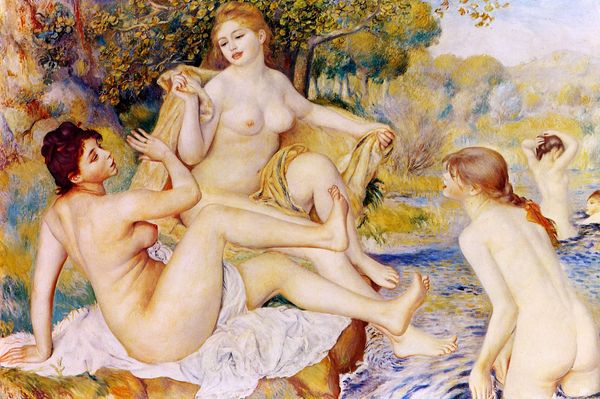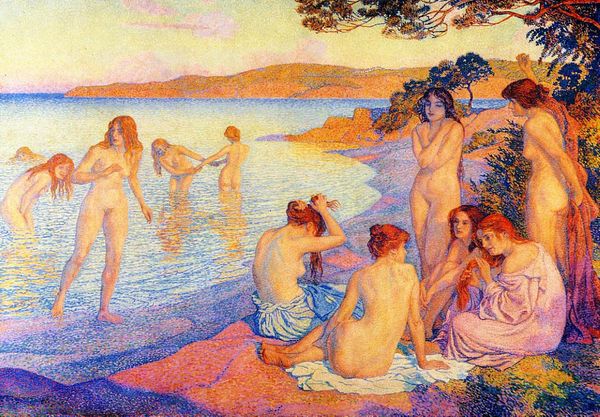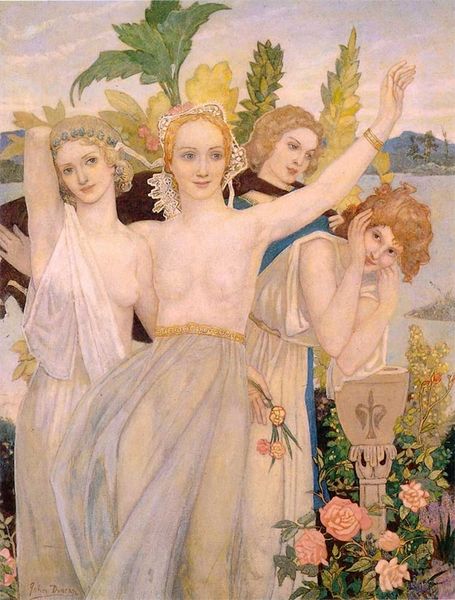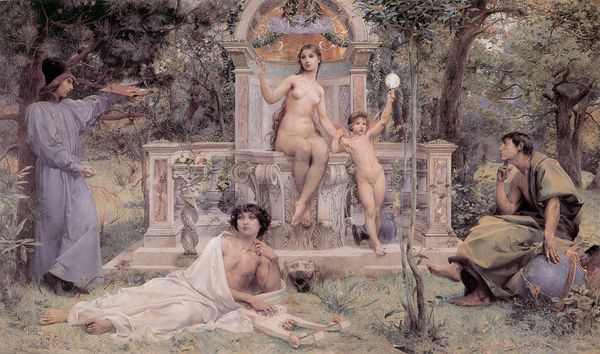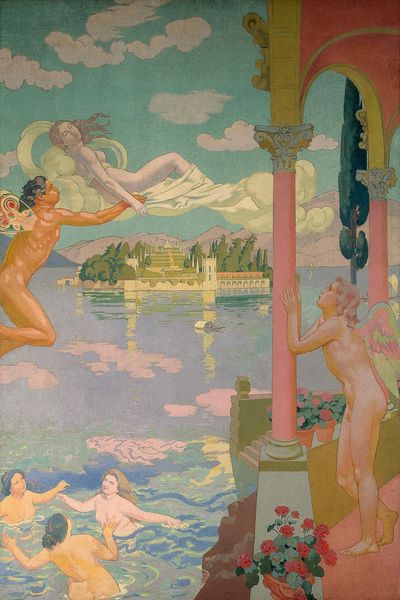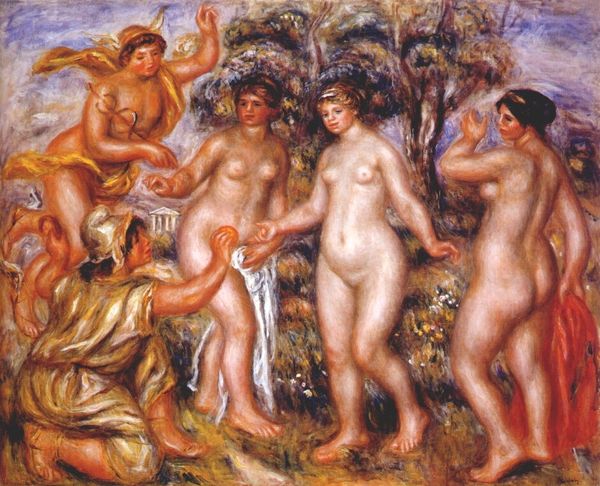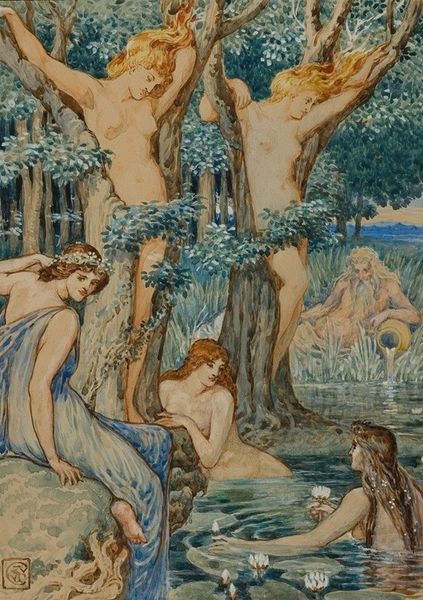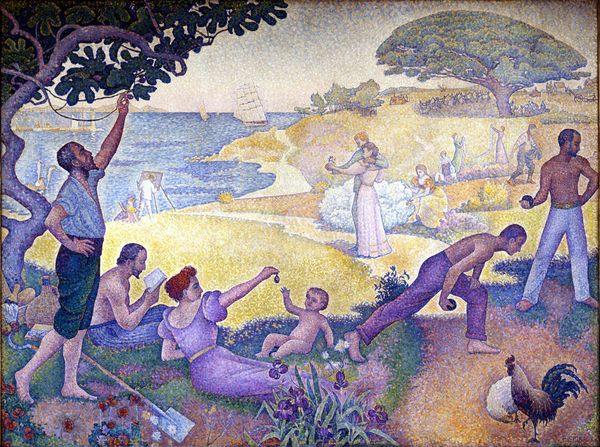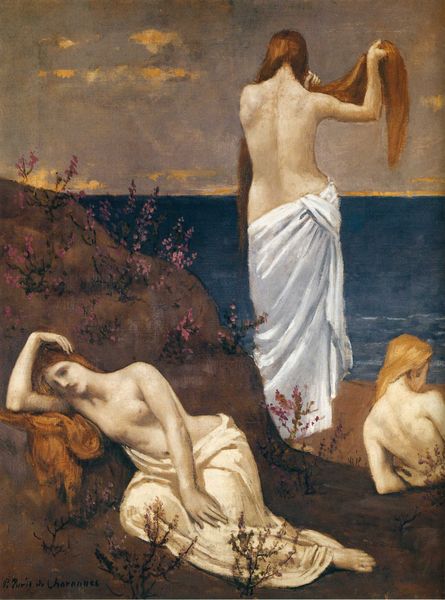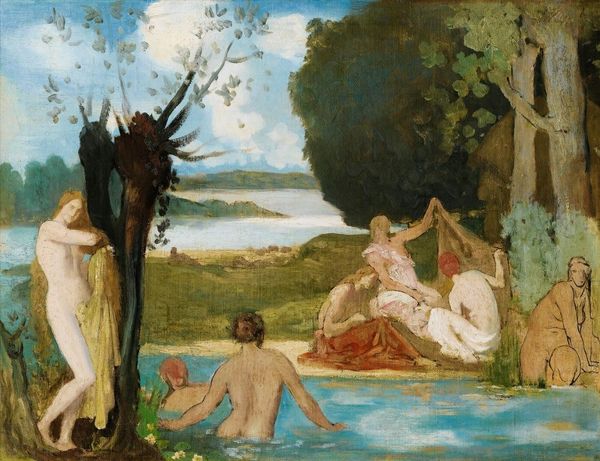
tempera, painting
#
allegories
#
allegory
#
tempera
#
symbol
#
painting
#
landscape
#
intimism
#
naive art
#
mythology
#
symbolism
#
watercolour illustration
#
nude
Copyright: Public domain
Curator: This is Maurice Denis’s tempera on canvas painting, “Cupid in Flight is Struck by the Beauty of Psyche,” painted in 1908 and currently housed at the Hermitage Museum. Editor: Oh, wow. It's utterly dreamy. Like stepping into a pre-Raphaelite perfume ad or something. A soft-focus idyll of beauty, you know? All pastels and flowing lines… Curator: It definitely has that feel. Denis was a leading figure in the Symbolist movement and Les Nabis, so he was interested in evoking moods and interior states rather than realistic depiction. The myth of Cupid and Psyche, of course, has always resonated with artists exploring love, desire, and the journey of the soul. What layers do you think Denis brings to the conversation? Editor: Hmm. Good question. I’m just struck by how intentionally soft everything is, it’s not exactly an ode to lust, it's like… filtered innocence. Almost like he is saying something about societal pressures or ideas about innocence and how they color beauty. Look at how weightless Cupid is and how…untouched… everyone looks. Curator: It’s a painting steeped in its historical moment, reflective of early 20th century anxieties around the changing roles of women, burgeoning sexualities, even spiritual uncertainty in the face of modernity. Psyche's nakedness, her serene pose, her connection to nature, they all evoke this idea of idealized feminine purity while hinting at a suppressed sensuality. Editor: I can see that. And Cupid floating above like a distant observer... or a voyeur. Even the colors… those washed-out pastels… it's not vibrant passion, it's more like a nostalgic memory. There’s something deeply melancholy about it. It's almost as if the image is yearning for an impossible, unblemished state of grace. Curator: I agree. And placing that narrative in a pastoral setting ties into wider cultural anxieties. Connecting women with nature was an easy, often lazy, association with nature and a simpler state of humanity. It avoids so much of the discourse that might surround images of nude figures today. Denis navigates that line in his painting, presenting beauty but with a slightly uncomfortable innocence that provokes questioning. Editor: That’s so well said. And it shows me how important historical contexts can be even if you just go into it loving all the dreamy floatiness. Makes you think of what the artists could have been thinking about. Curator: Exactly. It gives us some way of diving deeper and making that feeling even more acute. Editor: True. Thanks for the chat! I feel a bit lighter and much cleverer, haha.
Comments
No comments
Be the first to comment and join the conversation on the ultimate creative platform.
